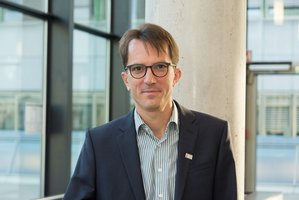TRANSNATIONAL ACCESS (TNA)
Users of GSI beam time for biophysics experiments at the GSI accelerator (SIS18 or UNILAC) can receive financial support via EU-funded transnational access (TNA) programs, if they come from outside of Germany. The Biophysics Department is currently involved in the Framework Programme for Research and Innovation of three EU research infrastructure projects in H2020 that provide budget for TNA. The projects are described below.
When applying to the Bio-PAC (https://www.gsi.de/work/organisation/wissenschaftliche_gremien/pac/bio_pac) or to the ESA-IBER program (www.gsi.de/IBER) please specify that you will also apply to the user selection panel (USP) of the EU project providing TNA. Please remember that you can only apply for travels to Germany (not within the country), and that the USP of the EU-Infrastructure must approve your application, in addition to the Bio-PAC or ESA-IBER reviewer panel. Details on the application procedure can be found here.
EU: INSPIRE, HITRIplus & RADNEXT
INSPIRE - Infrastructure in Proton International Research

Since 2019, GSI is a beneficiary in INSPIRE (Infrastructure in Proton International Research). It is a European research project aiming to provide a world-leading integrating activity for Proton Beam Therapy (PBT) research by combining the resourses of clinical and research partners, as well as the major manufacturers of proton therapy equipment (Varian and IBA). Through INSPIRE, existing PBT centres cooperate with centres that are under construction or still in the planning phase.
Among the main objectives of INSPIRE are the following:
- Develop a new infrastructure, which brings the research activities in clinical proton therapy centers, associated academic establishments and industry together.
- Enable researchers from across Europe (in the public and private sectors) to access this infrastructure and conduct research within it.
- Provide training for the next generation of researchers in this field where there is an internationally recognized skill shortage.
- Develop joint research activities that will improve the facilities available within the infrastructure, these will be available to European researchers later on in the project.
Through transnational access (TNA), INSPIRE provides researchers with an easy to access route to research excellence in PBT; it also serves as an opportunity for trans-European collaboration, rather than just the provision of a service. The TNA provides the integration of the major scientific equipment and research facilities associated with PBT and access to data and software systems.
In the framework of TNA within the EU/Horizon2020 Integrating Activities action, GSI provides access to its facilities under the Integrating Activity-INSPIRE contract. The related information can be found here.
More information about the INSPIRE can be found on the project homepage and here.
HITRIplus – Heavy Ion Therapy Research Integration plus

In the European commission-funded multicenter initiative HITRIplus (Heavy Ion Therapy Research Integration plus) 22 European research institutions in radiation research, including all four heavy ion research centres on the continent, combine their efforts for significantly advancing heavy ion cancer therapy. Thus, HITRIplus serves as a heavy ion counterpart to the proton-centred INSPIRE. The initiative is being coordinated by the Fondazione Centro Nazionale di Adroterapia Oncologica (CNAO, National Centre of Oncological Hadrotherapy Foundation) in Pavia.
The main objectives of HITRIplus are:
- To integrate, open up and broaden the leading European Research infrastructure for the treatment of cancer with beams of ions, ranging from helium to carbon and to heavier ions.
- To coordinate and strengthen the research programmes on heavy ion therapy of different European institutions.
- To develop novel technologies to improve the accelerators and their ancillary systems, thus improving the present and preparing the next generation European design for ion therapy facilities.
- To establish a European multidisciplinary community for heavy ion therapy research by connecting physics and engineering with medicine, biology and biophysics, and to integrate emerging, particularly South Eastern European regions into this community.
- To define the main technical features and the scientific programme of a future pan-European Research Infrastructure for medical and radiobiological research with heavy ion beams, to be built in South East Europe or in another European region.
- The GSI biophysics department is involved in the technical board and several work packages of HITRIplus, functioning as the TNA coordinator. Through this programme, researchers and clinicians from all over Europe will get access to heavy ion accelerators for both preclinical research and patient treatment. The GSI will cover almost two-thirds of the approx. 500 access units, thereby providing access to its facilities for excellent research projects in heavy ion cancer therapy.
For more information on HITRIplus see here.
RADNEXT - RADiation facility Network for the EXploration of effects for indusTry and research

- The project RADNEXT deals with innovative radiation testing methodologies. In RADNEXT, research facilities and institutes, academic institutions and industrial partners cooperate to advance our understanding of space radiation effects on electronic components and systems, and potential protection against it. The RADNEXT project aims to optimise the access of component engineers, system developers and radiation effects scientists to irradiation facilities, where representative conditions of their final application are reproduced, and that can deliver satisfactory validation for the end-users. This access will be based on a network of facilities, suitable for a very broad range of environments and applications, and with a common entry-point, where users can define, prepare, execute and analyse their irradiation campaigns. Two research departments are involved at GSI: Biophysics and Materials Research.






